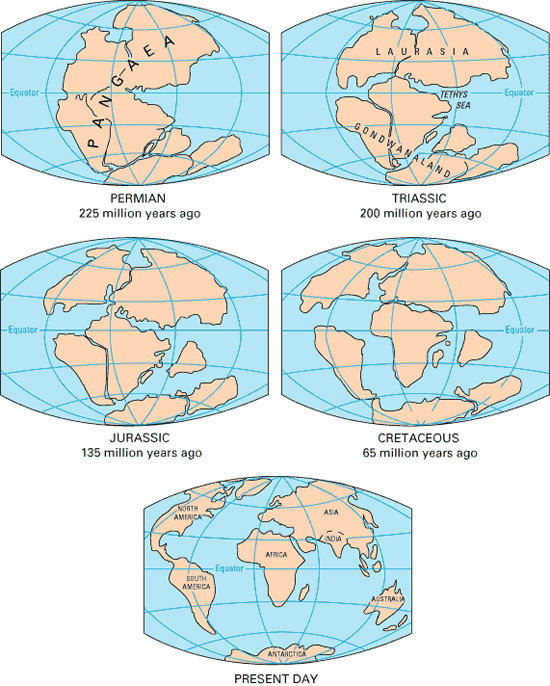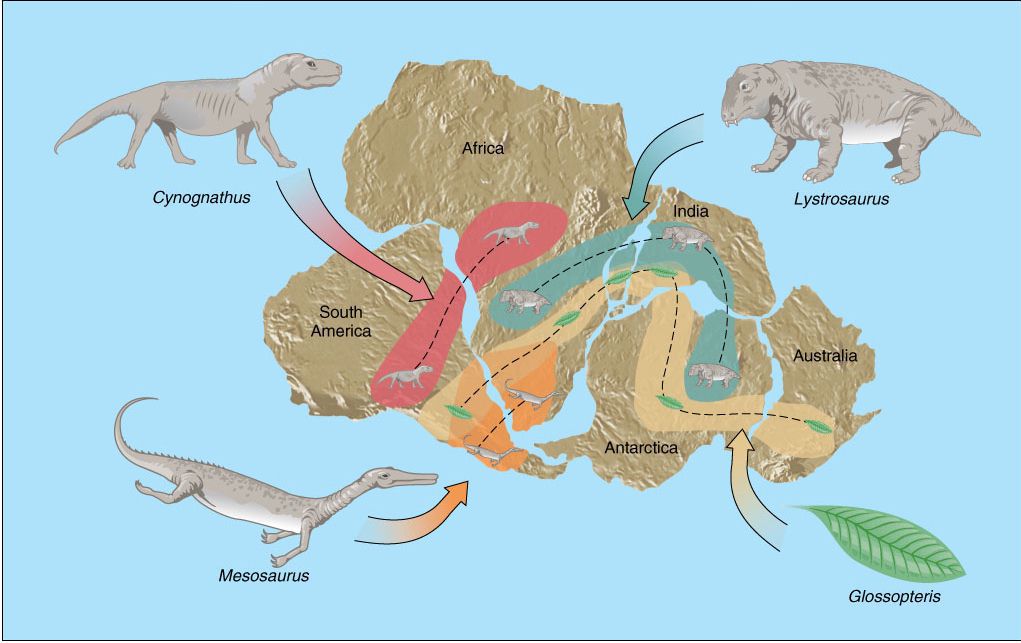| Home | Physics | Chemistry | Earth Science | Biology |
Alfred Wegener's Theory: Continental Drift
At the start of the twentieth century, geologists only studied the land that was close to them. They developed theories about erosion and mountain-building processes. There was no theory to explain that the geologic processes on Earth were related.
In 1915, Alfred Wegener (VEG nur) proposed a hypothesis that suggested Earth’s continents once were part of a supercontinent called Pangaea (pan GEE uh). He thought that Pangaea broke into pieces that drifted over Earth’s surface to their current locations.

Wegener hypothesized that Pangaea probably started to break apart around 200 million years ago. Unfortunately, he was unable to find a force strong enough to move continents.
Compare the eastern coastline of South America and to the western coastline of Africa. Do they match? When South America and Africa are joined together, their southern tips fit very well into the Weddell Sea of Antarctica. The coastlines of these continents are like puzzle pieces that fit together.
Wegener needed to prove that the continents once actually were joined. He compared the continents to a torn newspaper. To repair a torn newspaper, you need to make sure the words connect as well as the edges. In other words, the lines of print had to match in terms of their content, not just their shapes.
Wegener argued that rock types, fossils, erosion features, and mountain ranges on different continents could be matched. He said that continents could have been joined if there were similar structures and formations on them.

Wegener thought that he could prove Pangaea existed by using fossils. If fossils of large land animals that could not swim or fly across oceans were found on different continents, it would suggest that the continents once had been joined.
![]() The
fossils of large land animals, such as
Lystrosaurus
and
Cynognathus,
supported Wegener’s hypothesis. The fossils
of Glossopteris,
a large fern with large, heavy spores, also
supported the idea.
The
fossils of large land animals, such as
Lystrosaurus
and
Cynognathus,
supported Wegener’s hypothesis. The fossils
of Glossopteris,
a large fern with large, heavy spores, also
supported the idea.
When Pangaea broke apart, some mountain ranges were split. For decades, geologists had studied these mountain ranges as if they were separate ranges that had no connections. Wegener showed that they were once joined because they shared specific rocks and minerals.
Other scientists did not accept Wegener’s hypothesis because he could not describe a force strong enough to move the continents apart. He thought that Earth’s rotation, the gravitational pull of the Sun and the Moon, and centrifugal force could move continents. Physicists quickly proved that even when these forces were combined, they weren’t strong enough to move continents.